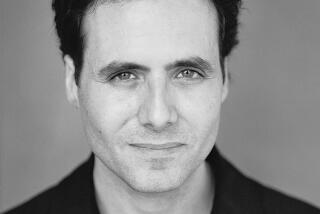The Challenge of Filling Sagan’s Shoes
- Share via
Carl Sagan’s gifts to humankind were legion. He was a brilliant researcher whose insights transformed planetary science, a dedicated and innovative teacher who made students full partners in the process of discovery, a gifted author and novelist whose occasional essays in Parade magazine undoubtedly reached more readers than the major scientific journals combined and he was perhaps the most effective spokesperson and “popularizer” of science in human history.
The sum total of these gifts adds up to an even greater legacy, one that will be even harder for the science and engineering community to sustain and fulfill. More than anything else, Sagan, who died Friday at 62, unlocked the doors to the hallowed halls of science and set out an inviting welcome mat. As the Associated Press’ George Tibbits noted in his appreciation, “Sagan helped to transport an ivory tower into the living rooms of ordinary people, enthralling millions with his vivid writing and flamboyant television soliloquies.”
This was no mean feat, and Sagan took his share of heat for it from the exalted scientific establishment. Fortunately for all of us, he persisted and prevailed. Now it is up to us, particularly scientists and engineers, to finish what he started.
Over the past several months, I have had conversations and debates with many groups of my scientist colleagues in which I suggested both the opportunity and responsibility for a new role as scientists--a role that could be termed the “civic scientist.”
In this new capacity, scientists, engineers and other technical professionals would take some time to get away from their computers, out of their labs, off their campuses and into a dialogue with the American public. A predictable response from many of my colleagues has been, we’re not very good at talking to the public about something they know little or nothing about. That, in fact, is a primary reason why this needs to be done.
At the National Science Foundation, all of our surveys show that more than two-thirds of the public believes that science is important. Nonetheless, of those surveyed only one in nine believes he or she is well informed about science and technology and only one in four demonstrates any level of science literacy.
These survey results speak volumes and probably tell us more about the scientific community than about the American public. This disconnect between people being interested in science yet feeling that their knowledge is seriously lacking should give all scientists and engineers something to ponder.
All scholarly fields, whether arts or sciences, are subject to this sense of separation and detachment. Science may be different in that its case is perhaps more extreme. And yet science and the technology it spawns pervade the very structure of our lives, from our health to our comfort and recreation, from our mobility to our work.
In his recent bestseller, “The Demon Haunted World: Science as a Candle in the Dark,” Sagan exposed the danger underlying our current dichotomy: “We’ve arranged a global civilization in which most crucial elements profoundly depend on science and technology. We have also arranged things so that almost no one understands science and technology. This is a prescription for disaster. We might get away with it for a while, but sooner or later this mixture of ignorance and power is going to blow up in our faces.”
Society today requires a scientifically and technologically literate population. We know that growing numbers of high value, high wage jobs rely on technical knowledge. We know that as voters in a representative democracy and as community and family members, we have to make judgments on nuclear power plants, landfill facilities, drinking water purity, medical procedures, workplace safely and the like.
We also know that science literacy must begin at home and in school, where students learn best through inquiry and analysis and not rote and drill. Most of all, we must follow Sagan’s lead and recognize that the concept of the civic scientist is not a one-way proposition. While it is necessary to increase public understanding of science, it is equally necessary for scientists to increase their understanding of the public. This is the hallmark of Sagan’s legacy--that communicating means listening as much as speaking.






